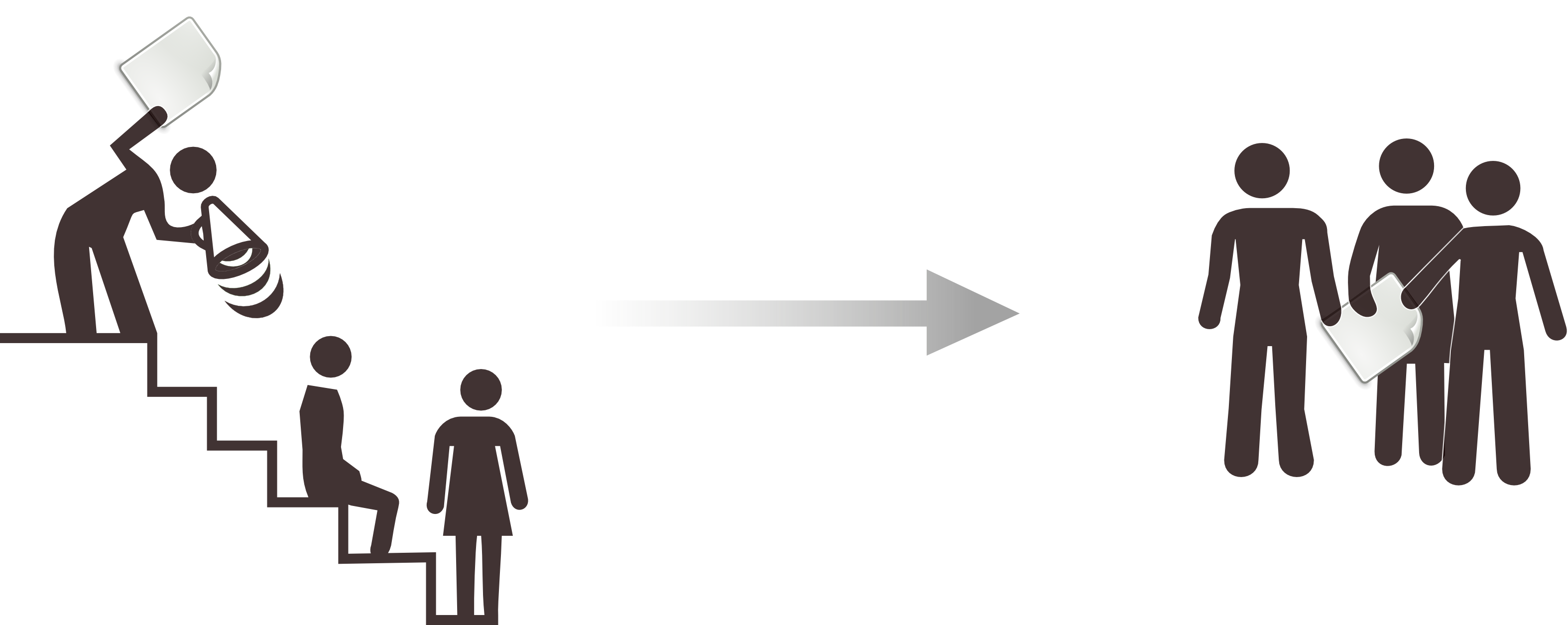On October 2, 2015, the world witnessed the birth of Alphabet Inc. which became the parent company of Google. There was a complete shift of subsidiaries under Google, to Alphabet. Google, now having Sundar Pichai as the CEO, only looks after the internet-related products and services domain. Effectively, Larry Page (the then CEO of Google, now of Alphabet) completely restructured Google along with the use of decentralisation to inch closer to the ever-expanding internet domain.
Suggested Videos
What is Decentralisation?
In a lot of organisations, decision making power rests at the apex i.e. with the higher authority. This means as we move down the structure the decision making power reduces exponentially. Such an organisation is termed as centralised.
On the other hand in some organisations, a big share of the decision-making cake is kept for the members at the lower levels of the hierarchy. Simply this is a decentralised structure. Further, decentralisation emphasises on placing authority near the points of actions. In other words, it pushes the authority down the chain of command. One key point to remember is that here the decision maker is given a fair amount of autonomy and responsibility.

Balance between Centralisation and Decentralisation
Interestingly, both the situations of complete decentralisation and complete centralisation are hypothetical. Let us understand both the scenarios individually.
In a case of complete centralisation, all the decision making power will rest with only the higher levels of management and the other levels would be completely useless. This means that there would be no use of a management hierarchy in such an organisation.
For the case of complete decentralisation, all the decision making power will be in the hands of lower levels of hierarchy. This would lead to redundancy of the higher managerial positions.
Hence both the cases are non-applicable in real-world situations. As an organisation grows in size and complexity, the degree of decentralisation generally increases. This is because in a large organisation the employees who are closer to certain processes possess more knowledge about them than the top management. Effectively, in every organisation, there must be a balance between both centralisation and decentralisation.
Importance of Decentralising
Develops Initiatives among Subordinates
The process of decentralisation makes the lower level managers question their judgement and abilities. When given responsibility and decision- making freedom, they are challenged to develop solutions. In the long run, this does a world of good to their confidence and promotes self-reliance. In action, this feature allows for the identification of potentially dynamic leaders and decision makers.
Develops Managerial Talent for future
Again, decentralisation makes the employees act independently. Under such conditions, they gain invaluable experience. Further, it gives them an opportunity to prove their mettle for higher job positions. In effect, this creates a workforce which is suitable for promotion and also helps to filter out those who won’t be able to handle greater responsibilities.
Quick Decision-making
In a centralised organisation, we make decisions ultimately at the higher levels of management. It is important to realise that the communication of decision to this levels takes place through the management hierarchy. Again, the response flows through the same channel of communication, which takes a lot of time. Hence, here decision making tends to be slow and restricts dynamic operating conditions.
On the other hand, in a decentralised structure, decisions are made on the spot at the points of action and do not require approvals from the higher levels. Effectively, it allows the organisation to make quick decisions on the go and be dynamic. Lastly, there are fewer chances of distortion of information as it doesn’t have to flow through long channels of communication.
Relief to Top Management
As discussed, decentralisation gives autonomous powers to subordinates. Under this, they have the freedom to take decisions and act within the limits set by the superiors. Further, there is no requirement for frequent supervisions by the superiors. Instead, they exercise control through other forms such as the return on investment. All in all, decentralisation allows the top management to focus on policy decisions rather than dealing with both policy and operational decisions.
Facilitates Growth
Along with granting autonomy to lower levels of management, decentralisation also grants autonomy to the departmental heads. Consequently, the departmental heads act in order to achieve growth for their respective departments, which gives rise to a healthy sense of competition among the departments. Effectively, this competition leads to an increase in the levels of productivity.
Better Control
Lastly, decentralisation helps in evaluation of performances of the individual departments, which are now accountable for them. Additionally, feedbacks from these various departments bring varying perspectives to the table. The biggest challenge for decentralisation is the accountability of performance. In response to this, better control systems such as balanced scorecard and management information system are being evolved. Finally, decentralisation allows for exerting creativity with regard to performance measurement systems.
A Solved Example for You
Question: Highlight the importance of decentralisation.
Answer: The importance of decentralisation is as follows:
- Develops initiative among subordinates
- Develops managerial talent for future
- Quick decision making
- Relief to top management
- Facilitates Growth
- Better control






Leave a Reply